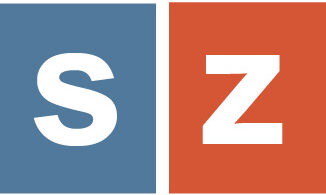
Pronounce S and Z in American English
Let’s study how to pronounce s and z in American English. We study these sounds together because they use the same mouth position. The difference is that s is pronounced with only air, and z is pronounced using sound from your vocal cords.
It’s very important to learn the difference between the s and z sounds. English speakers use these two sounds to make words plural. These two sounds are also used to form the third person singular of words in the present simple and past simple tenses.
How to Pronounce S
To make the s sound, pull back the corners of your mouth as if you were going to smile. Your teeth are almost touching, but they are still open a little bit. Use your tongue to block off the air except at the very tip, behind your front teeth. Now push air through the space above your tongue, making a sound like a hissing snake. Put your hand in front of your mouth. You should feel air coming out of your mouth.
It’s also possible to make this sound with the tip of your tongue touching the back of your bottom front teeth. Your tongue should also be working to close off the air from all parts of your mouth, except the very front. Practice both of these ways to say s. The place where you put your tongue may depend on the word you are saying and the other words around it.
The name Jesus contains both s and z. The first s is pronounced as a z, and the second s is pronounced as s.
Now practice these words with the s sound from the John chapter 5:
its, sick, saw, ask, answer, start, stop, son
Pronounce These Words with S
How to Pronounce Z
The mouth position for z is the same as for s. This time, though, add sound from your vocal cords. You will not be able to feel much air coming out of your mouth. However, if you place your hand on your neck, you should be able to feel your vocal cords vibrate. Repeat these words with me:
zebra, Ms., zone, zoo
Pronounce These Words with Z
Sometimes when you see the letter s, it will have the z sound. Sometimes when you see the letter z, it will have the s sound. We will talk more about this in the spelling section. (coming soon)
What Should I Study Next?
Our next pair of consonant sounds is f and v. If you have trouble with these sounds, there is a specific mouth position you need to learn, and then with practice it will be easy. Click the button to go there now.
